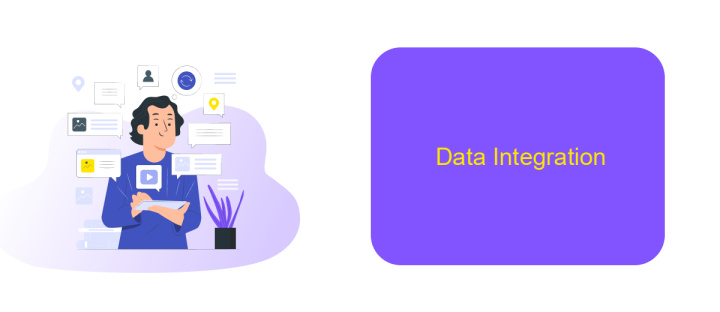Event Data ETL
Event Data ETL (Extract, Transform, Load) is a crucial process in data management that involves extracting event data from various sources, transforming it into a structured format, and loading it into a data warehouse or database. This process enables organizations to efficiently analyze and utilize event data for decision-making, improving operational efficiency, and gaining valuable insights into user behavior.
Event Data
Event data refers to the collection of data points generated from various occurrences within a system, such as user interactions, system events, and transactions. This data is crucial for understanding user behavior, optimizing processes, and making data-driven decisions. Event data can originate from multiple sources including web applications, mobile apps, and IoT devices.
- User interactions (clicks, views, form submissions)
- System events (errors, logins, updates)
- Transactions (purchases, payments, refunds)
To efficiently handle event data, organizations often use ETL (Extract, Transform, Load) processes which help in collecting, processing, and storing data in a structured manner. Integrating various data sources can be challenging, but services like ApiX-Drive simplify this by providing seamless integration solutions. ApiX-Drive enables the automation of data flows between different platforms, reducing manual effort and ensuring data consistency. This allows businesses to focus on analyzing the data rather than managing it, leading to more actionable insights and better decision-making.
ETL Process Overview

The ETL (Extract, Transform, Load) process is a fundamental aspect of managing event data, ensuring that raw data is converted into a meaningful format for analysis. The extraction phase involves gathering data from various sources, such as databases, APIs, and event logs. This step is crucial for compiling a comprehensive dataset that accurately reflects the events being monitored. Once the data is extracted, it moves to the transformation stage, where it is cleaned, normalized, and enriched to meet the analytical requirements. This may include filtering out irrelevant information, converting data types, and aggregating data points to provide a coherent structure.
In the final stage, the transformed data is loaded into a target system, such as a data warehouse or a business intelligence platform, where it can be queried and analyzed. Tools like ApiX-Drive can streamline this process by offering seamless integrations with various data sources and destinations, automating the data flow and reducing manual intervention. By leveraging such services, organizations can ensure that their event data ETL processes are efficient, reliable, and scalable, ultimately facilitating better decision-making and insights.
Ingestion and Transformation

Ingestion and transformation of event data are crucial steps in the ETL process to ensure data is clean, consistent, and ready for analysis. The ingestion phase involves collecting data from various sources, such as web servers, mobile apps, and IoT devices. This data is then transferred to a centralized storage system, often a data lake or warehouse, where it can be accessed for further processing.
- Identify data sources and determine the extraction method.
- Utilize tools like ApiX-Drive for seamless data integration.
- Transfer data to a centralized storage system.
- Apply data transformation techniques to clean and normalize the data.
- Load the transformed data into analytical tools for further insights.
During the transformation phase, raw data is cleaned and normalized to ensure consistency. This may involve removing duplicates, handling missing values, and converting data types. By leveraging services like ApiX-Drive, organizations can streamline the integration process, ensuring that data flows smoothly from source to destination. Effective ingestion and transformation are essential for accurate and actionable insights.
Data Integration

Data integration is a critical step in the ETL process for event data, ensuring that data from various sources is combined into a unified and coherent format. This process involves extracting data from multiple systems, transforming it into a consistent structure, and loading it into a destination system for analysis.
Effective data integration requires careful planning and the use of specialized tools to handle the complexity of combining different data formats and structures. One such tool is ApiX-Drive, which facilitates seamless integration between various platforms and services, allowing for automated data flow and synchronization.
- Automated data extraction from multiple sources
- Consistent data transformation and normalization
- Efficient data loading into target systems
- Real-time data synchronization and updates
By leveraging tools like ApiX-Drive, organizations can streamline their data integration processes, reduce manual effort, and ensure that their event data is accurate and up-to-date. This leads to more reliable insights and better decision-making capabilities.
- Automate the work of an online store or landing
- Empower through integration
- Don't spend money on programmers and integrators
- Save time by automating routine tasks
Advanced Analytics and Use Cases
Advanced analytics in the realm of Event Data ETL (Extract, Transform, Load) enables organizations to uncover deep insights and make data-driven decisions. By leveraging sophisticated analytical techniques such as machine learning, predictive modeling, and real-time data processing, businesses can identify patterns, trends, and anomalies that would otherwise remain hidden. This level of analysis is crucial for optimizing operations, enhancing customer experiences, and driving innovation.
One practical use case involves integrating various data sources to create a unified view of event data. Tools like ApiX-Drive facilitate these integrations by providing seamless connectivity between disparate systems, allowing for efficient data flow and transformation. For example, an organization can use ApiX-Drive to aggregate event data from multiple platforms, such as CRM systems, marketing automation tools, and social media channels. This consolidated data can then be analyzed to deliver actionable insights, such as customer behavior trends and campaign performance metrics, ultimately enabling more informed strategic decisions.
FAQ
What is Event Data ETL?
Why is Event Data ETL important?
What are the common challenges in Event Data ETL?
How can I automate Event Data ETL processes?
What should I consider when choosing an Event Data ETL tool?
Strive to take your business to the next level, achieve your goals faster and more efficiently? Apix-Drive is your reliable assistant for these tasks. An online service and application connector will help you automate key business processes and get rid of the routine. You and your employees will free up time for important core tasks. Try Apix-Drive features for free to see the effectiveness of the online connector for yourself.


